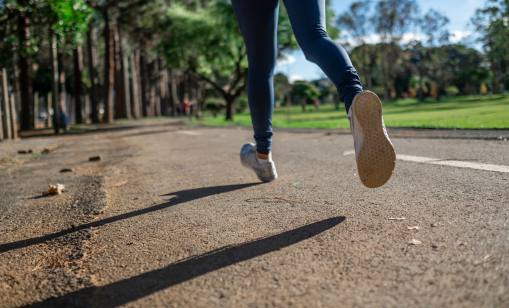Introduction
According to The Harvard Gazette, a staggering 85% of daily runners experience injuries. While running is highly beneficial for health, it also carries a significant risk of overuse injuries. To strike a balance, the run-one-rest-one or run-two-rest-one strategy is widely recommended. This approach helps prevent unnecessary injuries caused by overtraining and ensures sustainable progress.
Why Should You Follow the Run-One-Rest-One Rule?
1. Individual Recovery Needs
Every runner's ability to handle exercise load varies based on age, physical condition, and fitness levels. While running is excellent for health, overtraining can lead to injuries. By adopting a balanced running-rest schedule, you allow your body adequate time to recover.
2. Muscle Repair and Strengthening
During running, tiny micro-tears occur in your muscles. These tears are not permanent and typically repair within 48 hours. This cycle of tearing and repairing is how muscles grow stronger over time. However, running daily without rest can turn these micro-tears into chronic injuries.
Following the run-one-rest-one pattern gives your muscles time to recover and rebuild, ensuring you grow stronger without risking injury.
3. Flexibility for Experienced Runners
For experienced runners who understand their bodies well, variations like run-two-rest-one or even run-three-rest-one may work. However, beginners are encouraged to stick to the run-one-rest-one rule to avoid overtraining.
Is Rest Day a Complete Break from Activity?
Rest days can be divided into two types: static rest and dynamic rest.
1. Static Rest
Static rest involves complete inactivity. It includes activities like sleeping, relaxing, and simply letting your body recover naturally. For most runners, static rest is sufficient for recovery.
2. Dynamic Rest
Dynamic rest refers to active recovery methods. These involve low-intensity exercises designed to aid muscle recovery without straining the body. If you find it difficult to remain completely inactive, dynamic rest is an excellent alternative.
Both static and dynamic rest allow runners to maximize recovery while ensuring they have time for other activities, making their running journey more sustainable and enjoyable.
How to Use Rest Days Effectively
Here are some effective dynamic recovery exercises you can incorporate on rest days:
1. Swimming
Swimming at a slow pace for 20-30 minutes is a great way to relax muscles and strengthen the shoulders, chest, and back. It is an excellent cross-training option for runners.
2. Stretching and Yoga
Stretching and yoga improve muscle flexibility and range of motion. Avoid lower-body strength-intensive yoga poses on rest days. Instead, focus on gentle stretches to aid recovery.
3. Core Strength Training
Core muscles, including the abs, back, hips, and glutes, play a critical role in stabilizing your torso during running. Light core workouts can help improve your running form and prevent injuries. Avoid overtraining to prevent delayed muscle soreness.
4. Light Lower-Body Strength Training
Light, bodyweight exercises such as wall sits, calf raises, and side-lying leg lifts can strengthen the legs and ankles. Limit the sets to 2-3 to avoid overexertion.
Exercises to Avoid on Rest Days
On rest days, avoid high-intensity exercises that strain the lower body, such as:
- Jump rope or aerobic jumping exercises
- High-intensity swimming
- Heavy lower-body strength training
- Hiking or stair climbing
- High-resistance cycling or elliptical workouts
- Sports like basketball and badminton
The goal is to avoid overusing the same muscles, ligaments, and joints involved in running. Instead, focus on exercises that target supporting muscle groups.
Rest Is for Better Performance
Rest days are not setbacks; they are essential for progress. Giving your body time to recover ensures you come back stronger, with well-repaired muscles ready for the next challenge. Over time, this strategy will enhance your endurance and reduce the risk of injuries.
Conclusion
Running is a powerful way to stay fit, but without proper rest, it can lead to injuries and setbacks. Following the run-one-rest-one rule allows your body to recover, grow stronger, and perform better. Whether you choose static or dynamic rest, incorporating recovery into your routine is the key to a sustainable and enjoyable running journey.
FAQs
1. Why is rest important for runners?
Rest allows muscles to repair micro-tears caused during running, helping them grow stronger and preventing overuse injuries.
2. Can I do light exercises on rest days?
Yes, dynamic rest activities like swimming, yoga, and light strength training can aid recovery without overstraining the body.
3. How often should beginners rest?
Beginners should follow the run-one-rest-one rule to allow their bodies sufficient time to adapt and recover.
4. What are examples of dynamic rest?
Examples include swimming, stretching, yoga, core workouts, and light bodyweight exercises.
5. What exercises should I avoid on rest days?
Avoid high-intensity exercises like jumping, heavy strength training, hiking, and high-resistance cycling, as they can overstrain your muscles.








Leave a comment
All comments are moderated before being published.
This site is protected by hCaptcha and the hCaptcha Privacy Policy and Terms of Service apply.